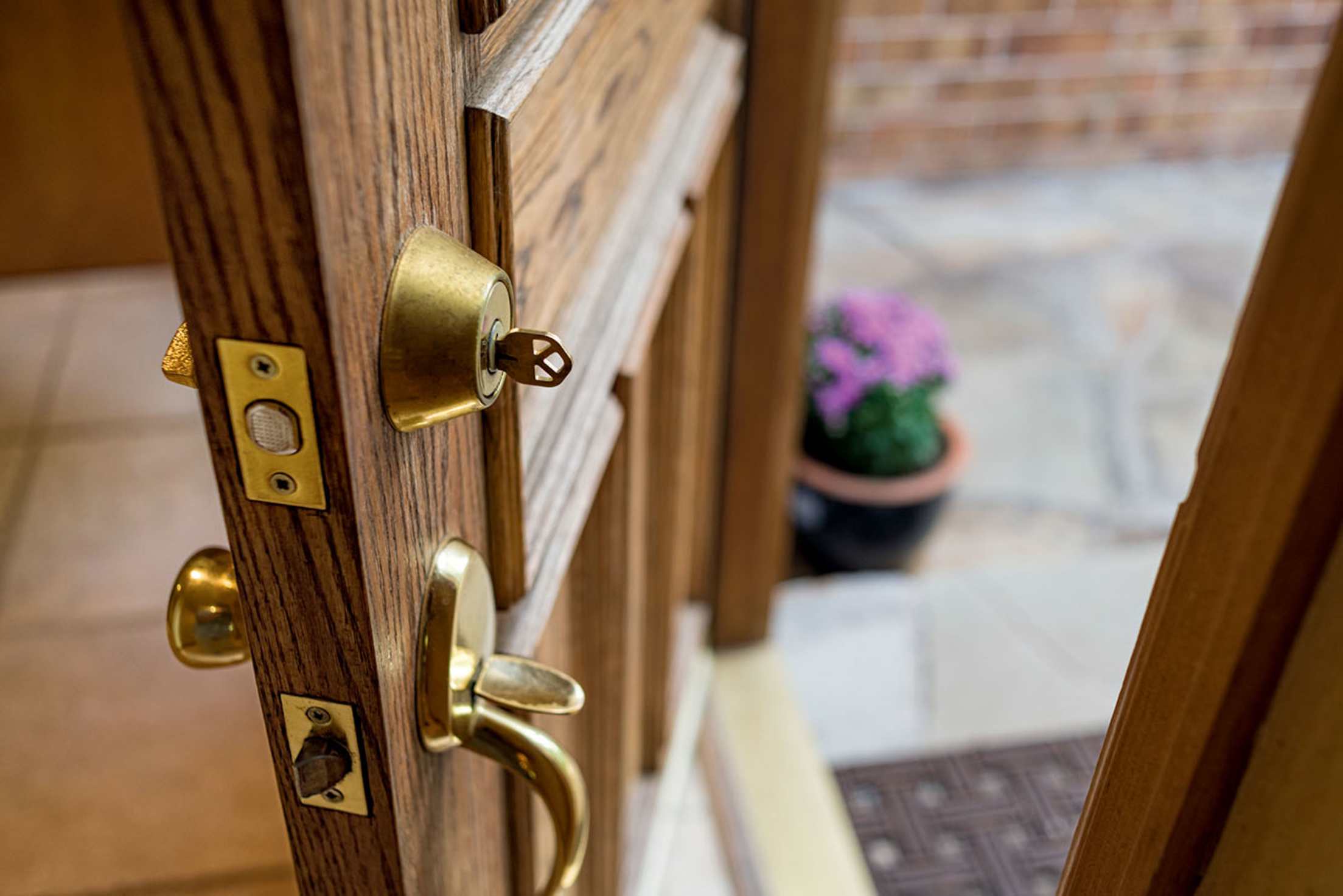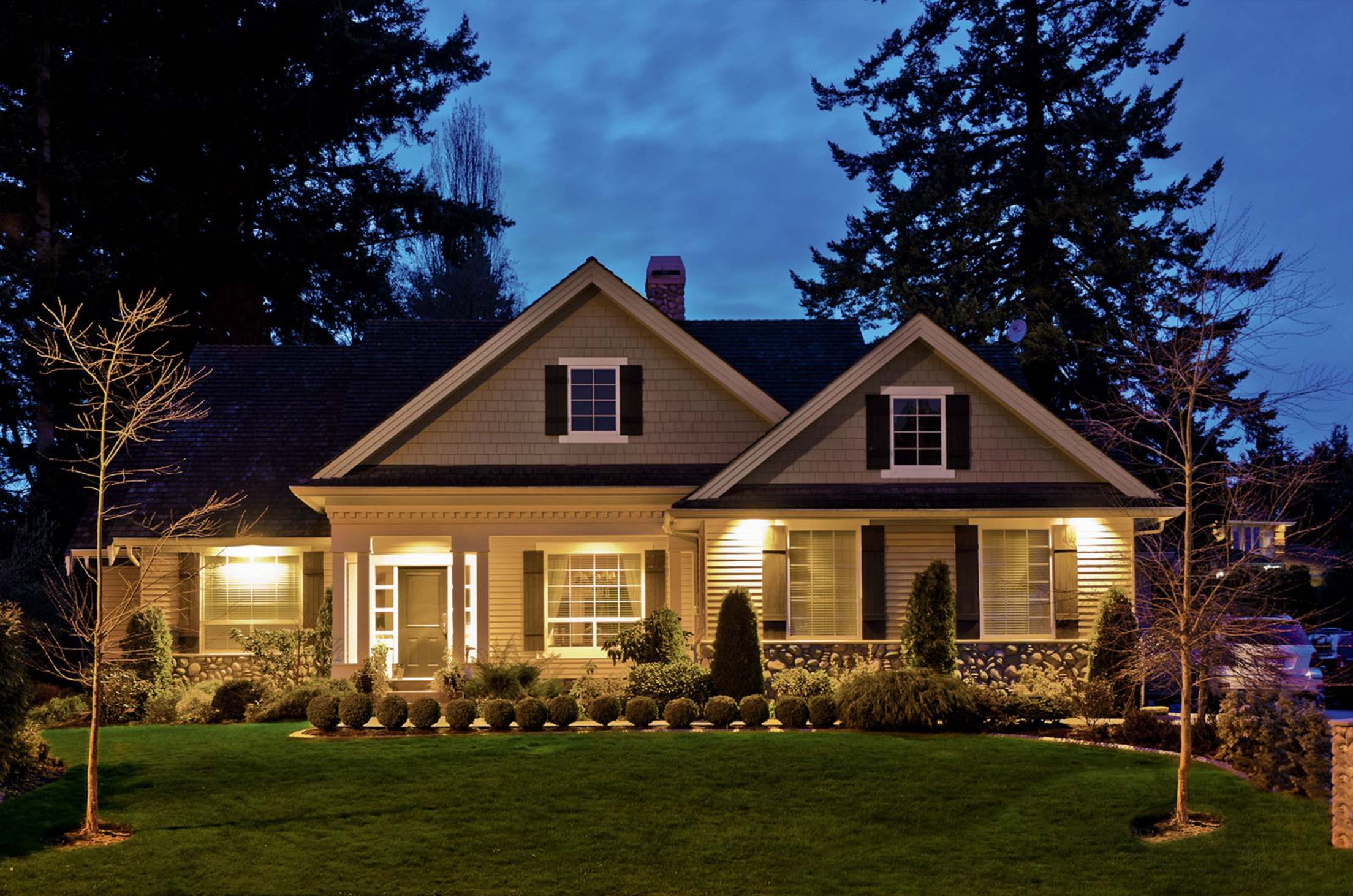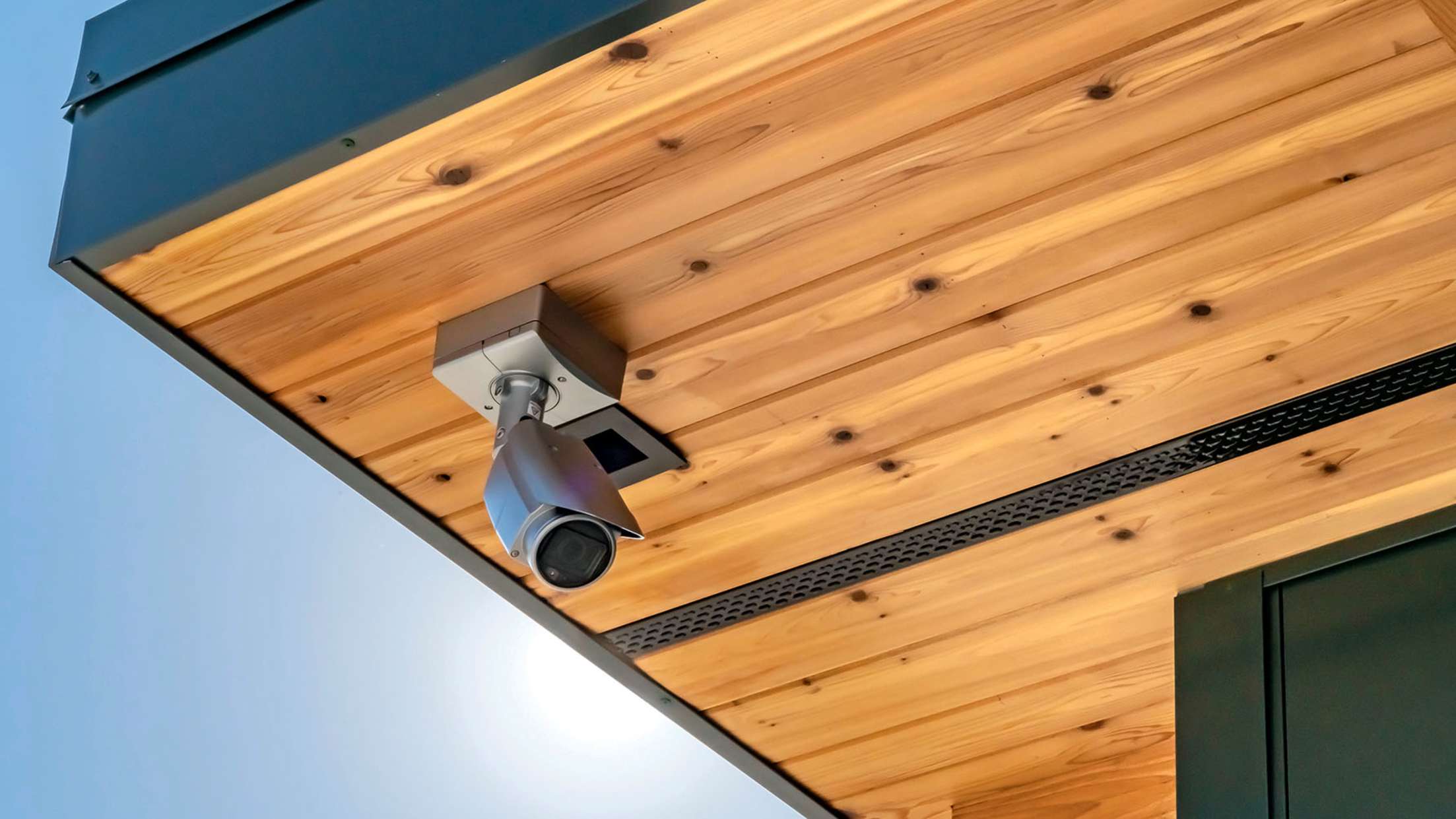
How to Secure Your Home
Want to protect your house from intruders? Here are 16 ways to do it.

Burglars are, among other things, experts at quickly identifying and assessing the security of your house; that's their job. Research suggests that if prowlers think it will take more than five minutes to break into a residence, they'll move on to another one. The key to making yours safer is to add multiple layers of security, from the edge of the yard to inside your closets.
1. Make sure that exterior doors are sturdy.
All outside doors—not just the front—should be made of metal or thick hardwood, and all should have sturdy frames. (Frames without enough support around the strike plate are easy to break with a sharp kick.) Security consultant Michael Silva recommends installing heavy-duty strike plates in all exterior door frames, and fastening those plates to the frame with screws that are long enough to reach into the surrounding wall studs. Install security studs on doors with exterior hinges. From a security perspective, doors with glass components are like windows; see tip 8.
2. Don't leave a key outside.
Prowlers know that many people stash spare keys outside, and they know the most common hiding spots. Instead, leave a set of keys with a trusted neighbor. If you must leave them outdoors, use a combination lockbox attached to something strong.
3. Use your locks.
You'd be amazed at how many people leave their windows and doors unlocked. In San Francisco, nearly 50 percent of daytime burglaries involve entry through unlocked doors and windows. Lock everything when you're away, even windows on upper stories. Speaking of which: Don't leave ladders outside or in an easily accessible garden shed. If you have exterior "climbers"—pipes and the like—replace them or install security barriers.
4. Add more locks.
If a burglar makes it into your house, he or she will make a beeline for the places where valuables are most commonly hidden. Consider protecting rooms and closets where you store yours by installing additional dead bolts on interior doors. (As with exterior doors, these locks will only be effective if you use them.) Rooms protected with such interior security can also double as safe rooms in case of intrusions when you're at home.

Once you have a sturdy lock installed—use it!
5. Install good locks.
Thieves can spot weak locks right away, so install the best ones you can on all exterior doors. The locksets (the mechanisms that keep doorknobs from turning) and the dead bolts that came with your house might not be as robust as they should be. As Furlishous Wyatt from San Francisco's former SF Safe program puts it, "You don't want to protect stuff worth thousands of dollars with a $9 lock." To play it safe, have a locksmith inspect and upgrade your locks as needed.
6. Make it hard to case your house.
Keep shrubs and trees cut back so that the entire front of your house can be seen from the street. In particular, be careful that none of your plants block possible points of entry; all windows and doors should be clearly visible. You should be able to see through any front fencing; solid privacy fences provide excellent cover for burglars.
7. Don't advertise long absences.
If you'll be gone for a while, ask a trusted neighbor to pick up deliveries daily, roll out the trash bins, and periodically move your car. Don't ask a friend who lives far away; he or she might come by once the day after you leave and again the day before you come back: "It's just human nature," says Wyatt. Mark Demler of AAA Smart Home Security suggests checking with your security company before you leave to be sure it has up-to-date contact information. And don't post vacation photos to social media until you get back.

Check your windows for broken locks or loose frames.
8. Pay attention to windows.
Like doors, windows should have sturdy frames and strong locks. The original locks on older windows may not be super secure, so consider supplementing them with add-on hardware. If you're really worried about intrusions, you can install windows with laminated, tempered, or reinforced glass; retrofit yours with security window film; or install grates. Be sure that the latter have quick-release mechanisms, in case of fire.
9. Get an alarm—and use it.
Invest in an alarm system that's monitored around the clock and alerts the police in the event of an intrusion. Like locks, alarms do no good if you don't use them. Arm the system even when you leave for a short errand: Most burglaries take less than 10 minutes. When everyone is home for the evening, use your system's night mode, which turns off the interior motion sensors but leaves perimeter sensors on. Added bonus: A home security system may qualify you for an insurance discount.
10. Outsmart false alarms.
Some homeowners refrain from using their security systems for fear of setting off false alarms. There are easy fixes for the two most common causes of such errors.
Modern motion sensors are designed to ignore pets. But if yours are large (over 85 pounds), keep them out of areas covered by those detectors or have your alarm company adjust the system.
Periodically dust around motion sensors to prevent alarms triggered by cobwebs, dust bunnies, and spiders.
11. Make your lights smarter.
You might use those old analog timers to turn your lights on and off when you're away. If you do, you should deploy a lot of them—on multiple lights around the house (including exterior ones, if possible) as well as on audio and video equipment. The idea is to convince an observer that actual humans are home. If you have a smart-home system—and the intelligent light bulbs, plugs, and wall switches that go along with it—you can tell that system to turn on your lights and music according to a natural, varied schedule.

Outdoor lights improve your home security and make it easier to find your way in the dark.
12. Illuminate the outside.
Wyatt recommends combining constant lighting (porch lights and the like) with motion-sensor lighting, particularly around the sides and back of the house. When installing exterior lights, be careful not to create dark spots in the yard or along walls, where prowlers can hide, and ensure that all lights point down to reduce their impact on light pollution and migrating wildlife.
13. Secure the garage.
As with other exterior doors, your garage door should not have any breakable glass or clear panels. If you use a home security service, ask about installing a tilt sensor on that door to detect intrusions. And don't forget about the door that leads from the garage into your house; it should be just as secure as any exterior door.
14. Consider a safe.
A good safe can provide that extra level of security for your most valuable belongings. Look for a model that protects against both burglary and fire. Many fire safes will do a fine job of protecting against flames but wouldn't last five seconds against a determined thief. Michael Silva recommends looking for models certified as UL Listed. If you aren't willing to invest in a safe, at least consider storing valuables in places that burglars are less likely to look—such as under the kitchen sink in an old cleaning-products box.

Professional installers can help you find the best spot for security cameras and sensors.
15. Add security cameras.
Having an alarm system is good, but having an alarm system plus surveillance cameras is better. And, no, that video doorbell at the front door isn't enough. Ideally, you'd have multiple cameras around the house, with video feeds stored online. While you're adding cameras, pay attention to their placement to ensure you have complete coverage.
16. Do a home inventory.
Should the worst happen and someone makes off with your valuables, you'll need a complete list of them for the police and your insurance company. To be prepared, compile a thorough home inventory, listing all your major possessions. It should include the make, model, and serial number of each asset. Another smart move: Take out all your valuables from wherever you store them, then walk around the house with your phone, and capture video of everything. (This is particularly useful for items like sets of silver, which consist of lots of individual pieces.) Then store both the list document and the video on a portable hard drive somewhere off-site.
Whether you own or rent your home, protect your personal property with AAA Insurance.